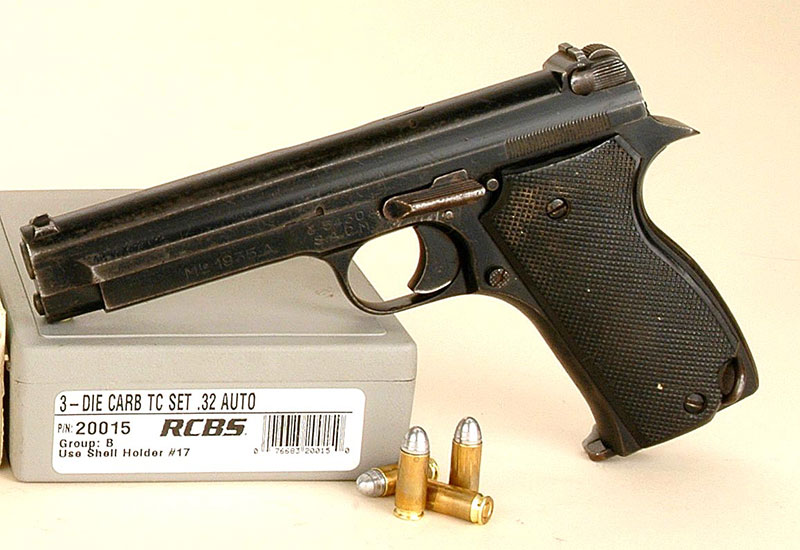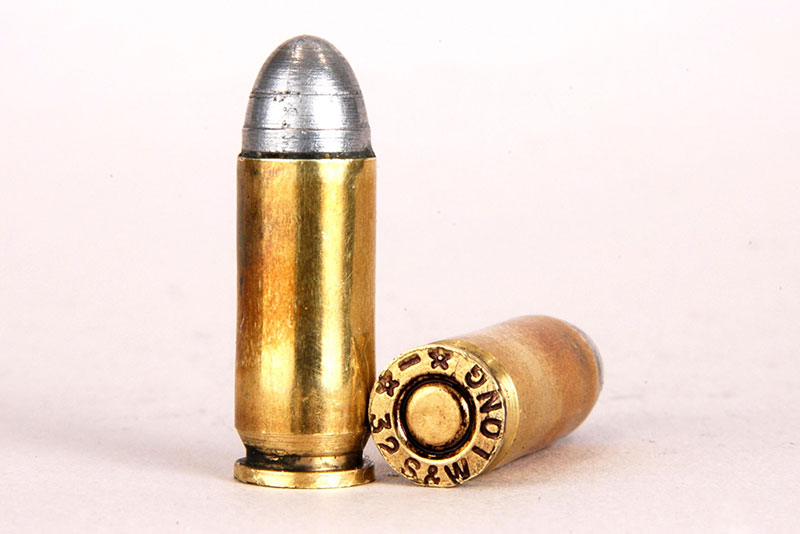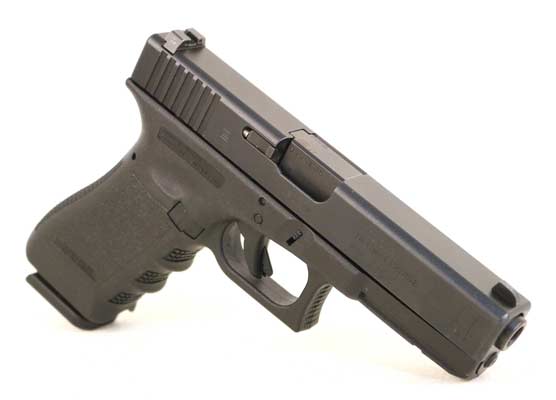Handguns Of WWII, Part 8
The French Model 1935A
Part 8 Of A 13-Part Series
Starting in grade school my primary passion was World War II history and the firearms used. Therefore it was an amazing day when around age 12 my father came home one evening and handed me something in a brown paper bag. It was a real pistol resting in a full flap military type holster! I was excited but confused too. What kind of pistol was it and how did he come up with it? More on that later.
Even though I was allowed to keep the pistol in my room, all the standard safety rules applied. There was no taking it out of the house to show off for other kids and certainly no trying to fit ammunition into it. The reason Dad felt safe with that arrangement was because he said there was no ammunition available for it. My father was not a “gun-guy” so I still don’t understand how he knew about the ammo scarcity, because neither of us had any idea as to what that handgun actually was.
Even at that early age, I could see it faintly resembled the “Army .45” which of course was the Model 1911. But its bore was obviously small. Along the way somewhere I got to handle a real US Model 1911 and knew then my pistol was much thinner and lighter. Even odder to me was the fact the 1911 I handled had a dull, matte finish but my strange pistol looked like it was painted black.
Over the years by reading all I could about firearms and asking anyone perceived as knowing anything about them, I discovered the pistol Dad brought home was made in France. That was a bit of a disappointment, I admit. But on the plus side it was a French military pistol which could have been (probably was) carried in World War II. It was chambered for an odd cartridge called the 7.65mm Long, which truly was not available then. And Model 1935As did have a baked-on black enamel finish.
The Cartridge
That French 7.65mm Long cartridge’s story itself it quite interesting. Most readers will have heard of the World War I Pedersen Device that could be installed on specially built US Model 1903 “Springfield” rifles. It turned them from a bolt action into a semi-auto, albeit only firing a pistol-sized cartridge instead of the hefty .30-‘06. This was done to make ‘03s more deadly in trench combat. As it were, World War I ended before the Pedersen Device-equipped Springfields got into action. How does that relate to the French 7.65mm Long? The .30 Pedersen and the French 7.65mm Long are the same dimensionally. One has to wonder if after World War I the United States left enormous stocks of their .30 Pedersen ammunition in France and so the French decided to capitalize on it.
In his book Military Handguns Of The Two World Wars, author John Walter says an engineer named Charles Petter, employed by Societe Alsacienne de Constructions Mecaniques (SACM), copied much of John Browning’s ideas to develop the Model 1935A pistol. It was adopted by the French army in 1936. Walter goes on to state only a “few thousand” SACM-Petter pistols were delivered to the French government before the German victory over them in 1940, and then by 1944 another 40,000 or so were taken by the Wehrmacht before France was liberated.
The Model 1935A has a 4.3″ barrel, weighs a mere pound and a half, and has an 8-round magazine capacity. Unlike the Colt 1911 it does not have a grip safety but does have a hammer block type on the left rear of the frame. Push it rearward and a piece of steel prevents the bobbed hammer from striking the firing pin. Sights are a simple small blade front dovetailed to the slide and a notch rear. Its trigger mechanism is single action only.
Duke Learns
By age 17 I was perusing every month’s issue of The American Rifleman. I found an advertisement for some newly imported French 7.65mm Long ammunition. By then Dad had no objection to me ordering some for trying in the long-unfired Model 1935A. It was steel-cased, grungy looking stuff but every round went off. Stoppages with the old pistol were common, which could have stemmed from years of my youthful mishandling.
Now back to where Dad got it. Our small coal mining town’s chief of police’s name was Rossi Bucci (pronounced Butch). He was of Italian heritage as was my father. Dad said Rossi Butch “gave” him that pistol after taking it off a drunk. I suspect it also had something to do with Dad being a bill collector.
Late in high school Rossi Bucci’s son Mike and I became friends. We were about the only two guys in our class with firearms interest, so starting in our senior year we shot together often. Eventually Butch, as we all called him, saw my old French pistol and just had to have it. I stressed to him ammo was nigh on impossible to get, but I may have neglected to mention his father had given it to my father.
Finally we settled on the sum of $12.50 for pistol with holster, and to my surprise Butch quickly discovered it would work as a single shot with .32 Auto factory loads. So much for Dad’s feeling of security because there was “no ammunition” for it.
Eventually “Butch” broke the Model 1935’s firing pin and I have no idea what ever became of it. At age 21, my first shooting friend, Mike Bucci, died of cancer while I was on one of my forays “out west.” “Butch” was responsible for me getting my first Colt SAA, but that’s another story.
Click here to links to all the 13-part on-line series of Handguns Of World War 2 articles.









